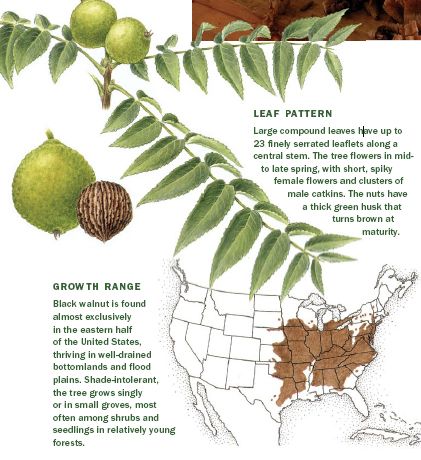
For more on the material, read The Virtues of Black Walnut.
Black walnut trees in the U.S. are facing a serious threat called thousand cankers disease, according to Colorado State University researchers. This recently recognized problem has already devastated black walnut trees west of the Rocky Mountains over the past 10-15 years.
The disease is caused by a newly discovered fungus that is carried to trees by the walnut twig beetle. A native of the Southwest, the beetle is usually associated with the Arizona walnut tree, to which it is not harmful. It is, however, harmful to the black walnut tree which has been planted extensively throughout the West.
“The walnut twig beetle has shown a fantastic spread through the western U.S. within the past 25 years,” says Whitney Cranshaw, an entomologist at Colorado State. “In recent years we have seen new records for this insect in Colorado, northern New Mexico, Utah, Idaho, Oregon and Washington. And everywhere we are finding the beetle, all the black walnuts are dying.”
The bigger concern is if thousand cankers disease moves east where black walnut is a common forest species. “I think thousand cankers disease has the potential to devastate black walnut just as Dutch elm disease nearly wiped out American elms and chestnut blight eliminated the American chestnut,” said Cranshaw. “Right now it is contained west of the Front Range in Colorado and the High Plains provide a good natural barrier, but all it would take is one careless individual moving a walnut log with the beetles and we could have an outbreak that could quickly spiral out of control.”
Cranshaw emphasizes the importance that foresters, arborists, woodworkers and lumber mills recognize this new threat. They say no walnut logs with bark intact should be allowed to move further east than where the disease is currently known. Walnut lumber and well-dried logs without bark likely pose little threat of carrying the fungus-carrying beetles.
For more information, please visit www.ext.colostate.edu/pubs/insect/0812_alert.pdf.

























Comments
Is there a threat to the California Black ( Claro) walnut or the English walnut variety in anyway, that is so common here in California?
Hi TonyCz,
If people have additional questions, I'd contact the folks at Colorado State University. Their info is in the pdf link above and they have more background on all this:
Whitney Cranshaw ([email protected]) or Ned Tisserat ([email protected]), Department of Bioagricultural Sciences and Pest Management, Colorado State University.
Thanks for your interest,
Gina
FineWoodworking.com
Log in or create an account to post a comment.
Sign up Log in